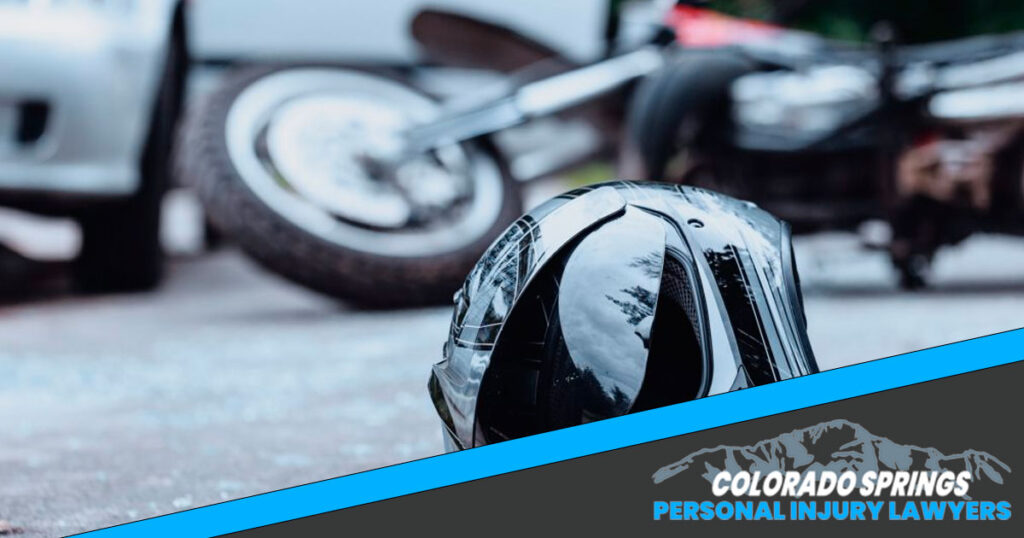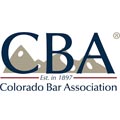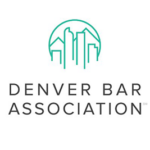Aside from being a convenient way to commute, the incredible sense of freedom associated with riding motorcycles makes them very attractive to many Americans. Colorado has some of the country’s most scenic and thrilling roadways to enjoy on a motorcycle. While feeling the wind on your face navigating the open road on two wheels offers an exhilarating experience, accidents involving motorcycles can have tremendous consequences.
Unlike cars and other vehicles with airbags, seat belts, and a structure to protect the driver, motorcycles are open to the elements leaving the rider exposed and extremely vulnerable to severe or fatal injuries from an accident. Last year, motorcyclists accounted for 20% of Colorado’s total traffic fatalities; of the 149 riders that lost their lives in crashes, 75 were not wearing helmets; this statistic is why it’s imperative motorcyclists must take their protective measures for safety seriously.
There are a variety of reasons motorcycle accidents occur. They’re rarely minor or predictable; however, most of them are preventable. The following article will discuss the precautions you can take to help protect yourself on your motorcycle, the injuries involved, and the measures to help avoid the common causes of motorcycle accidents in Colorado Springs.
Common Causes of Motorcycle Accidents and Ways to Help Avoid Them
1. Left turn collisions – The most common cause of motorcycle accidents, with the highest rate of incidence, occurs when a vehicle makes a left-turn in front of or into a rider. This type of accident happens frequently at intersections; motorcyclists’ smaller profile can make them difficult to see and more vulnerable to a collision with a vehicle making a left turn.
While these accidents between two vehicles are also common, collisions with motorcycles usually have a much more devastating outcome. They can result in severe injury or a possible fatality for the rider. The vehicle making the left turn is typically at fault for the accident. However, if the motorcyclist was traveling in the wrong lane or moving at excessive speed, they may be found partially at fault for the collision.
Avoiding left turn collisions can be difficult, but not impossible. If you notice a vehicle paused in an intersection or up ahead without their signal on, especially if you see their front wheel turned slightly to the left, there’s a good chance they’re attempting a left turn. Either slow down and wait for them to clear or if there’s room, check for other traffic and safely move to the right. Riders must also exercise caution while turning left, ensuring they have the right-of-way and they don’t turn in front of a vehicle traveling towards them in the lane they’re crossing.
2. Negligence – Driver negligence is a leading cause of motorcycle accidents in Colorado Springs. The smaller profile of motorcycles can make them more difficult to see, car and truck drivers that fail to observe their surroundings while maneuvering through traffic or intersections pose a considerable risk to motorcycle riders sharing the road. A vehicle making a turn or a sudden lane change without signaling, checking their blindspot for a motorcycle beside them, or changing lanes too closely in front of a motorcycle gives them little time for reaction, potentially causing an accident and injury to the rider.
To avoid these situations, everyone sharing the road needs to be aware of their surroundings, use their turn signals, and exercise caution when turning or moving through multi-lane traffic. Truck drivers need to be diligent with mirror checks before they change lanes, and car drivers, along with mirrors, should also perform quick shoulder checks to make sure their blind spots are clear.
Motorcycle riders need to anticipate sudden movement from vehicles and maintain a safe distance to react to negligent driver behavior. They should avoid being in a driver’s blind spot or make sure they are seen by spotting the driver in their side or rear view mirrors. If you can’t see them, they can’t see you.
3. Speeding – Excessive speed significantly contributes to all vehicle accidents. Speeding extends stopping distances for both drivers and motorcycle riders, reducing the time needed for slowing down to avoid collisions or reactions to a sudden hazard on the road. People decide to ride motorcycles for various reasons, and there are a variety of motorcycles to choose from.
Some choose motorcycles that allow the ability to maneuver easily through traffic and travel faster than most vehicles; although they only make up a small percentage of all bikes on the road, high-performance motorcycles account for the highest number of speed-related motorcycle accident fatalities. These bikes are light, agile, and fast, with the fastest road-legal bike reaching speeds up to 273 mph, increasing the temptation for speeding and the risk of an accident.
Following the posted speed limits and staying vigilant of speeding drivers while riding are the easiest ways to avoid speed-related motorcycle accidents. If you do feel the need for speed, a racetrack provides a controlled environment that allows you, with the proper instruction and safety gear, to push the limits of your motorcycle.
4. Impaired driving – Driving under the influence of alcohol and drugs remains a persistent problem with drivers and motorcycle riders. Alcohol and drugs reduce the function of the brain, impairing thinking, reasoning and muscle coordination, all of which are abilities essential to operating a vehicle or motorcycle safely. Since motorcycles offer minimal protection to the rider, they face a higher risk of severe injury or death, especially accidents involving alcohol or drug intoxication.
It goes without saying that you shouldn’t ride your motorcycle while impaired. If you become intoxicated after riding to a destination, leave your motorcycle there and find another way home. With the availability of ridesharing there’s no reason to put yourself or others in jeopardy. Also, it’s a good idea to avoid riding your motorcycle during peak bar hours, this can help minimize encounters with impaired drivers and the risk of an accident.
5. Lane splitting – Although passing a vehicle or sharing the same lane is illegal in Colorado, lane splitting is a frequent cause of motorcycle accidents. Due to their smaller size and maneuverability, it’s not uncommon for motorcycles to attempt to travel between two lanes of slow-moving or stopped traffic. The motorcyclist usually moves faster than the other vehicles, and the limited space between them presents the danger of riding in the blind spots of drivers, increasing the risk of a collision.
However, motorcycles can share a lane or ‘co-ride’ with one other motorcycle. This will enhance their visibility to drivers and provide motorcycle riders a safer way to share the road.
The best way to limit collisions caused by lane splitting is to avoid doing it. Lane splitting puts the rider at risk of injury of varying degrees, causes property damage to vehicles and aggravates drivers. If, for some reason, you need to lane split, make sure you have enough room between vehicles to avoid injury or damage to vehicles, like breaking side-view mirrors.
6. Head-on collisions – The majority of motorcycle fatalities involve accidents with vehicles, and the highest rate of fatalities are from head-on collisions. When a head-on collision occurs between a vehicle and a motorcycle, the results can be catastrophic to the rider. The nature of high-speed impacts exposes the rider to severe physical trauma and is at very high risk of fatality or sustaining devastating injuries.
To help avoid a potential head-on collision before it occurs, the National Safety Council (NSC) recommends using a method called the four R’s
- Read the road ahead – Scan ahead to the top of the next hill, curve, or intersection to recognize hazards like an oncoming vehicle that crosses over the line. Check the shoulder of the road to see if you have room to pull over. Watch the space between an approaching vehicle and the centerline.
- Drive to the Right – Drive slightly to the center of your lane to create extra space between you and other vehicles or, on multi-lane roadways, leave one lane to the left open. If you are facing a head-on collision, drive to the right onto the shoulder.
- Reduce your speed – Immediately reduce your speed if you see a hazard. This will give the oncoming vehicle time to recover and return to their lane; if not, drive to the right.
- Ride of the road – You will have a much better chance of survival if you ride off the road to avoid a head-on collision.
Hazardous road conditions – Motorcycles are more susceptible to accidents from hazardous road conditions than other vehicles. Their smaller size make them significantly lighter and less stable than cars or trucks, maintaining control on slippery surfaces, uneven pavement, loose gravel, sand and debris is much more difficult on a motorcycle. These conditions also become increasingly more hazardous for riders taking sharp turns or accelerating too much through wide turns.
When you head out for a ride on your motorcycle you need to stay vigilant to avoid road hazards, even on your own street, and especially if it’s the first ride of the season. After the winter months there is the added risk of new potholes and sand left behind from snow removal, carefully scan the road ahead to avoid any risks and if you come across a hazard, make sure there aren’t any vehicles in your way before maneuvering around it.
Parked vehicle doors – A vehicle can cause a motorcycle accident even if it is stopped or parked on the side of the road. A driver or passenger who neglects to check behind them for oncoming traffic before exiting the vehicle can cause a motorcycle accident by opening their door in the rider’s path. This can result in a serious crash, depending on the motorcycle’s rate of speed, possibly ejecting the rider forward with a great deal of velocity and height onto the road.
While accidents of this type may only result in minor property damage for other vehicles, they can be devastating to motorcyclists, resulting in severe injuries or a fatality.
Always check for oncoming traffic before opening vehicle doors into an active roadway to avoid causing an accident. If you are riding your motorcycle on streets with parked vehicles, look for drivers through the rear window or in the driver-side door mirror. If you see someone sitting in their vehicle, anticipate enough space for their door to open and pass safely.
Common Injuries of Motorcycle Accidents in Colorado Springs
Motorcycles lack a vehicle’s protective features, leaving the rider exposed and vulnerable. Accidents involving motorcycles are often very severe; the negligent actions of another driver can result in the following injuries, some of which can have a lifelong impact on the rider:
- Head injuries – ranging from mild to severe depending whether or not the rider was wearing a helmet.
- Traumatic brain injuries (TBI) – Usually resulting from not wearing a helmet, or head-on collision
- Back and neck injuries – This can include whiplash, fractured vertebrae, herniated disks and sciatic nerve damage.
- Spinal cord injury – This can result in partial or complete paralysis.
- Broken or fractured bones – Lower extremities between the pelvis and the feet are the most common but also include ribs, chest, collar bone, arms and facial breaks and fractures.
- Internal organ damage – Severe physical trauma can cause bruising, tears, and punctures from broken bones to organs like the lungs, liver, kidneys, and spleen.
- Severe skin abrasions – Commonly referred to as road rash or road burn, caused by the skin being worn off due to friction from the road while sliding at a high rate of speed.
Despite a rider’s best vigilance efforts, they cannot always avoid the actions of a negligent driver. In the unfortunate event of a motorcycle accident that causes bodily injury, hiring an experienced Colorado Springs personal injury attorney will be beneficial. They can successfully maneuver through your claim’s legal obstacles to obtain a settlement to cover your losses and support your recovery without financial worry.
Precautions You Can Take to Protect Yourself From a Motorcycle Accident
Riding a motorcycle is not without its inherent risks, there are safety precautions you can take for your protection and to significantly reduce the odds of having an accident.
Wear Protective Gear
In Colorado, anyone 18yrs or younger must wear a helmet if they are on a motorcycle. Wearing a DOT-compliant helmet at any age will greatly reduce the risk of sustaining a serious or fatal head injury, and investing in quality protective gear is highly recommended. Jackets, pants, boots, gloves, and reflective or bright clothing specifically designed for riding motorcycles will help increase your safety on the road.
Be Vigilant
Always be aware of your surroundings and focused while riding. Scan the road ahead for changing conditions or hazards, be extra vigilant in high traffic areas, at night, and on the highway. Never put yourself or others at risk by riding while intoxicated, and avoid riding if you are too tired.
Take a Refresher Course
Improving motorcycle riding techniques, regardless of how much experience you have, is alway beneficial. The riding time in Colorado Springs is limited by the winter season, after a few months off your bike a motorcycle safety course can refresh your skills and confidence out on the road.
Obey Traffic Laws
Always follow the traffic laws and obey the speed limits where you ride. Avoid changing lanes recklessly through traffic and use your turn signals.
Be Seen and Heard
Lights aren’t just for nights, keeping them on during the day can help make you more visible to drivers. Use your horn to alert other vehicles or pedestrians of your presence if they’re not paying attention, and avoid riding in blind spots to make sure drivers can see you.
Maintain Your Motorcycle
To ensure your motorcycle is safe to operate, regular maintenance is essential. Before you ride, always check your lights, be certain your brakes are functioning properly, and make sure that your tires are in good condition with the correct air pressure.
Be Properly Insured
All Motorcyclists and drivers in Colorado must have minimum liability insurance. Although not required, it’s recommended that riders carry optional insurance coverage as well, especially since it’s more affordable than auto insurance. Optional additional policies, such as enhanced personal injury coverage and uninsured motorist coverage can provide the rider further protection financially.
The Importance of Legal Representation
Establishing negligence is the primary element for any accident claim, whether it is related to a vehicle or a motorcycle. Accidents involving motorcyclists present challenges specific to riders, making their claims more complicated. Because of a perceived assumption of risk involved with motorcycles, riders face more scrutiny from adjusters.
It is not uncommon for insurance providers to minimize their expenses by implying the rider was engaging in dangerous driving behavior and at fault for the accident, therefore offering a settlement that is insufficient for them to recover financially or physically. That’s why hiring an attorney who understands the laws related to motorcycles, their often complex claims process, and the bias they face from adjusters is vital.
Contact a Colorado Springs Motorcycle Accident Lawyer
After being injured in a motorcycle accident, protect yourself and get the compensation you deserve by consulting a knowledgeable Colorado Springs motorcycle accident lawyer.Their legal expertise will help you understand your options, and gather the evidence imperative for a successful claim.
Our highly experienced and award-winning attorneys will navigate the complex process presented to motorcyclists from difficult and impatient insurance companies by dealing with any resistance that might prevent a fair value for your settlement.
We prioritize our clients, listen to their needs, and provide custom-tailored attention until we get a desirable outcome. Your injuries caused by another’s negligence can require temporary or long-term care. We will provide you with the strongest legal representation possible to minimize stress and ensure you are financially secure for your recovery including the care you may need in the future. Contact us today for a free consultation.
















